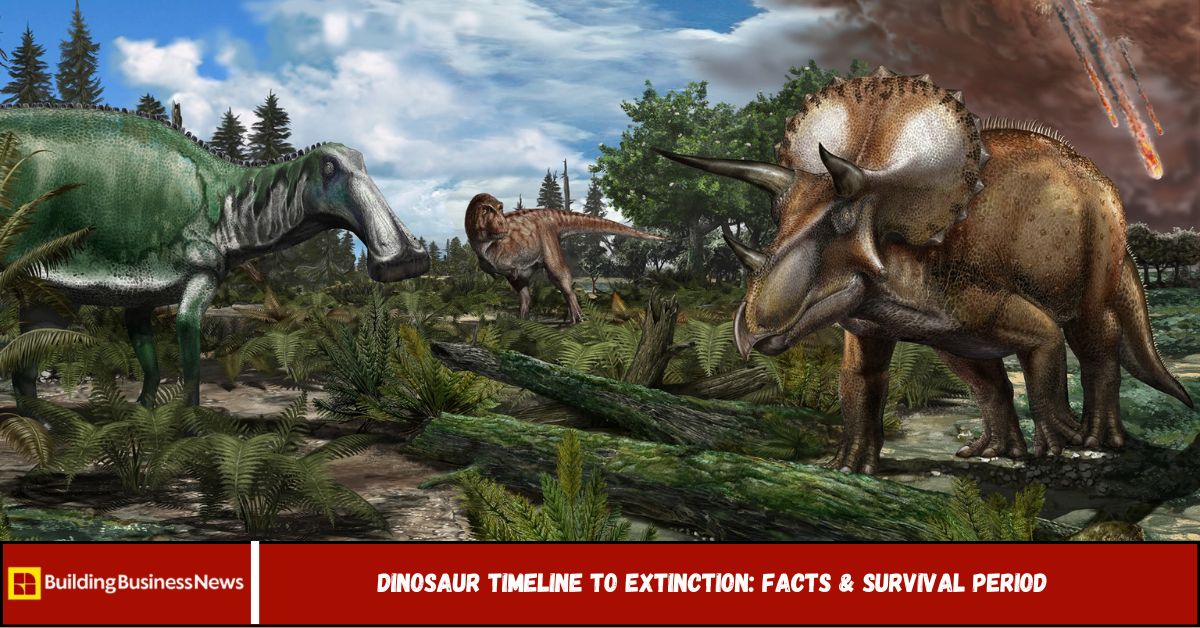A Complete Dinosaur Timeline to Extinction: How Long Did They Roam Earth?
Dinosaurs ruled Earth for over 160 million years before their sudden extinction. This article outlines the full dinosaur timeline, including major periods (Triassic, Jurassic, Cretaceous), evolutionary milestones, and the event that ended their reign. Backed by up-to-date fossil records and scientific insights, this guide provides a clear overview of how long dinosaurs lived—and how they vanished.
The history of dinosaurs stretches across an astonishing 165 million years, dominating Earth through dramatic evolutionary shifts, climate changes, and extinctions. But how exactly did these prehistoric creatures evolve—and what brought their reign to a sudden halt?
From their earliest appearance in the Triassic Period, to their rise and rule during the Jurassic, and their final chapters in the Cretaceous, dinosaurs shaped the planet’s ecosystems in ways we’re still uncovering today.
This article breaks down the complete dinosaur timeline, highlighting each major period, the species that defined them, and the mass extinction event that marked the end of an era. Explore how the Mesozoic Era became the stage for one of nature’s greatest evolutionary sagas.
How Long Did Dinosaurs Actually Rule the Earth?
Dinosaurs are often portrayed as prehistoric giants that disappeared long ago, but how long did they actually dominate the planet? The answer might surprise you: Dinosaurs thrived for over 160 million years, evolving across three major geologic periods before a sudden extinction 66 million years ago.
In this article, you’ll discover:
- The full dinosaur timeline by geologic era
- Key evolutionary changes across periods
- What caused their mass extinction
- How dinosaurs lived and adapted over time
By the end, you’ll have a clear understanding of how long dinosaurs ruled the Earth—and why they’re no longer here.
The Mesozoic Era: The Age of Dinosaurs
The reign of dinosaurs occurred entirely within the Mesozoic Era, which lasted from about 252 to 66 million years ago. This era is divided into three main periods:
1. Triassic Period (252 – 201 million years ago)
- Dinosaur origin: The earliest dinosaurs evolved from small, reptile-like ancestors
- Earth’s environment: Hot, dry, and dominated by one supercontinent—Pangaea
- Key species: Eoraptor, Herrerasaurus
- Notable events: First true dinosaurs appear around 230 million years ago
2. Jurassic Period (201 – 145 million years ago)
- Dinosaur diversity exploded during this time
- Earth’s climate became more humid, and Pangaea began to break apart
- Key species: Brachiosaurus, Stegosaurus, Allosaurus
- Evolution of large herbivores and powerful carnivores
- First birds (like Archaeopteryx) evolved from small theropods
3. Cretaceous Period (145 – 66 million years ago)
- Dinosaurs reached peak diversity and dominance
- Flowering plants appeared, reshaping ecosystems
- Key species: Tyrannosaurus rex, Triceratops, Velociraptor
- Continents shifted into modern positions
- The period ended with the Cretaceous-Paleogene (K-Pg) extinction event
How Long Did Dinosaurs Roam the Earth?
Dinosaurs lived from about 230 million to 66 million years ago—a total of roughly 165 million years.
To put that into perspective:
- Humans (Homo sapiens) have existed for around 300,000 years
- Dinosaurs were dominant for over 500 times longer
This long timeline allowed for incredible diversity, adaptation, and evolutionary innovation.
The Mass Extinction Event: What Killed the Dinosaurs?
The end of the dinosaur age came suddenly—by geological standards.
Cretaceous-Paleogene (K-Pg) Extinction Event – 66 Million Years Ago
- Triggered by a massive asteroid impact near the Yucatán Peninsula (Chicxulub Crater)
- Released the energy of 10 billion atomic bombs
- Caused wildfires, global darkness, and a sharp temperature drop
- 75% of Earth’s species went extinct, including all non-avian dinosaurs
Supporting evidence:
- A thin layer of iridium-rich clay, rare on Earth but common in asteroids
- Shocked quartz and global soot layers found in geological records
- Crater over 112 miles wide discovered in Mexico in 1991
Are Dinosaurs Truly Extinct?
Not entirely. While non-avian dinosaurs died out, avian dinosaurs—modern birds—survived. Birds are considered direct descendants of small theropods, meaning dinosaurs technically still live among us.
Dinosaur Timeline Recap
| Period | Time Frame (Million Years Ago) | Major Highlights |
|---|---|---|
| Triassic | 252 – 201 | First dinosaurs appear |
| Jurassic | 201 – 145 | Massive growth in size and diversity |
| Cretaceous | 145 – 66 | Peak evolution, ends with mass extinction |
Key Takeaways
- Dinosaurs lived for about 165 million years, across the Mesozoic Era
- They evolved significantly from small creatures to massive predators and herbivores
- The K-Pg extinction wiped out all non-avian dinosaurs in a global catastrophe
- Birds are the only surviving dinosaurs today
Frequently Asked Questions (FAQs)
1. How long did dinosaurs live on Earth?
Approximately 165 million years, from the late Triassic to the end of the Cretaceous.
2. What caused the dinosaurs to go extinct?
A massive asteroid impact 66 million years ago caused global climate collapse.
3. When did dinosaurs first appear?
About 230 million years ago, during the Triassic Period.
4. Did all dinosaurs go extinct?
No, birds are considered the last surviving group of dinosaurs.
5. What was the largest dinosaur period?
The Cretaceous period had the most diversity and size in dinosaur species.
6. How do scientists know how long dinosaurs lived?
Through fossil records, radiometric dating, and geological layer analysis.
Conclusion
Dinosaurs ruled the Earth for a span of time that dwarfs the age of humanity. From their humble beginnings in the Triassic to their sudden extinction 66 million years ago, they adapted, evolved, and flourished in a changing world. Though their age ended in disaster, their legacy lives on—every time you see a bird in flight.

